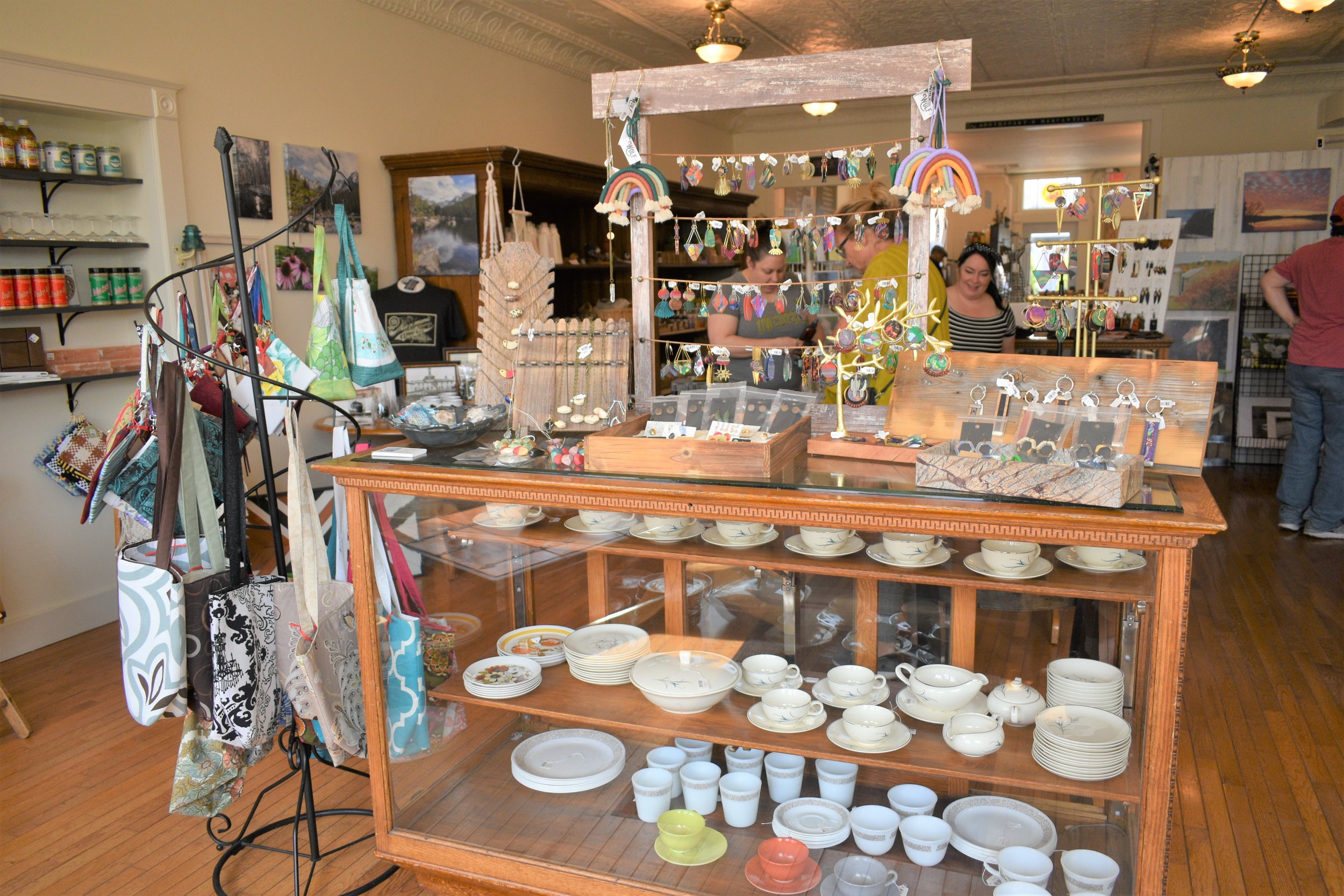Walking with water, dancing with Coon Creek: Art celebrating the Coon Creek Watershed on display this summer
Over the last two years, 70 Coon Creek Watershed residents shared more than 60 hours of stories about the Coon Creek Watershed as part of the Coon Creek Community Watershed Council’s Learning to Make Running Water Walk Oral Narrative Project. Madison-based artist Gabrielle Whisler has listened to nearly all of them.
Paintings Whisler created as she listened to the oral narratives are on display at Madison’s Neighborhood House Gallery through August. The show, “Walking with Water,” features Whisler’s acrylic and ink illustrations, and reflections on watershed inspired by the oral narratives.
“A lot of this work is about how the past influences the present and the future,” Whisler said. “All these streams and stories from the past converge to shape the present.
Whisler created the illustrations as an undergraduate engineering student at UW-Madison, in collaboration with other UW-Madison students and faculty, and La Crosse-based Ope! Publishing, as part of the “Walking with Water” zine collection.
"Walking with Water" is a four-volume set of zines that draws from oral narratives watershed residents shared as part of Learning to Make Running Water Walk. By gathering together to listen to stories in the Coon Valley Conservation Club and homes, farms, and fields across the watershed, project participants worked to learn from the experience and expertise of past and present watershed residents, build on the watershed’s history of conservation leadership, understand current practices, concerns, and hopes, support the development of a Coon Creek Watershed Plan, and grow community around shared stories.
The “Walking with Water” zine collection builds from the oral narrative project to highlight first-person stories of flooding, conservation, community, and culture in the Coon Creek Watershed. The first of these publications, "Process," shares stories from the first two years of the Coon Creek Community Watershed Council and the Copies are available at the Cashton, Westby, and Coon Valley libraries.
Whisler’s illustrations are featured throughout the zines. Her blue ink paintings capture moments from the oral narratives in swirling lines that she said are inspired by flowing water.
To create the paintings, Whisler listened to each oral narrative, noting important themes, images, and ideas, and working to represent them in her art. She also spent time traveling through the Coon Creek Watershed, getting to know storytellers and the places, colors, and textures that infuse their narratives.
“You have to know the people, the history, and the place,” Whisler said. “I had to be there, to be inspired by the land and what it looked like, what people look like in that space, and how water moves in the space. You have to be there, and that took a lot of time to conceptualize.”
In taking this time with the oral narratives and the people who shared them, Whisler said she has come away with deep insights to how the past flows into and shapes lives and landscapes in the present. And, as Whisler remembers one storyteller putting it, it is important to continually ask what from the past should be taken into the present, and what should be left behind.
It’s a question Whisler reckons with in “Walking with Water,” and one she has found herself returning to as she navigates changes in her own life.
She also said the project has transformed the way she approaches art.
“Now I only paint in ink,” Whisler said. “The flow of the ink, working with water, it all made me more connected to water.”
Creating art about and inspired by the Coon Creek Watershed brought Whisler closer to her own family’s history.
Like many of the storytellers featured in the oral narrative project, Whisler is a descendant of Norwegian settlers who immigrated to the Driftless at the turn of the 20th century. Her family settled in Readstown, along the Kickapoo River. Whisler was raised on a farm near New Glarus, but remembers returning to Readstown as a child, listening to her grandparents’ stories and hearing the sounds of the river.
Whisler hopes visitors to “Walking with Water” in Madison find their own connections to the stories from the Coon Creek Watershed, and that the exhibit inspires them to connect with their own watersheds.
“I’d love for people to leave here thinking about how they can take care of their watershed,” Whisler said. “What can people do to help take care of Lake Wingra, or the streams in the Arboretum? What can people do to help protect the water where they live?”
Ultimately, Whisler would like to bring “Walking with Water” to the Coon Creek Watershed. For now, though, visitors can find her work at the Neighborhood House, on 29 S Mills St in Madison. More of Whisler’s art is available on her website: https://whislergabrielle.my.canva.site/#about
The mission of the Coon Creek Community Watershed Council is to continue the historic legacy of conservation leadership through improving and restoring our soil, water, and air as stewards of the Creek Watershed. We focus on strategies and practices that individuals can implement. Together, we are learning to make running water walk.







